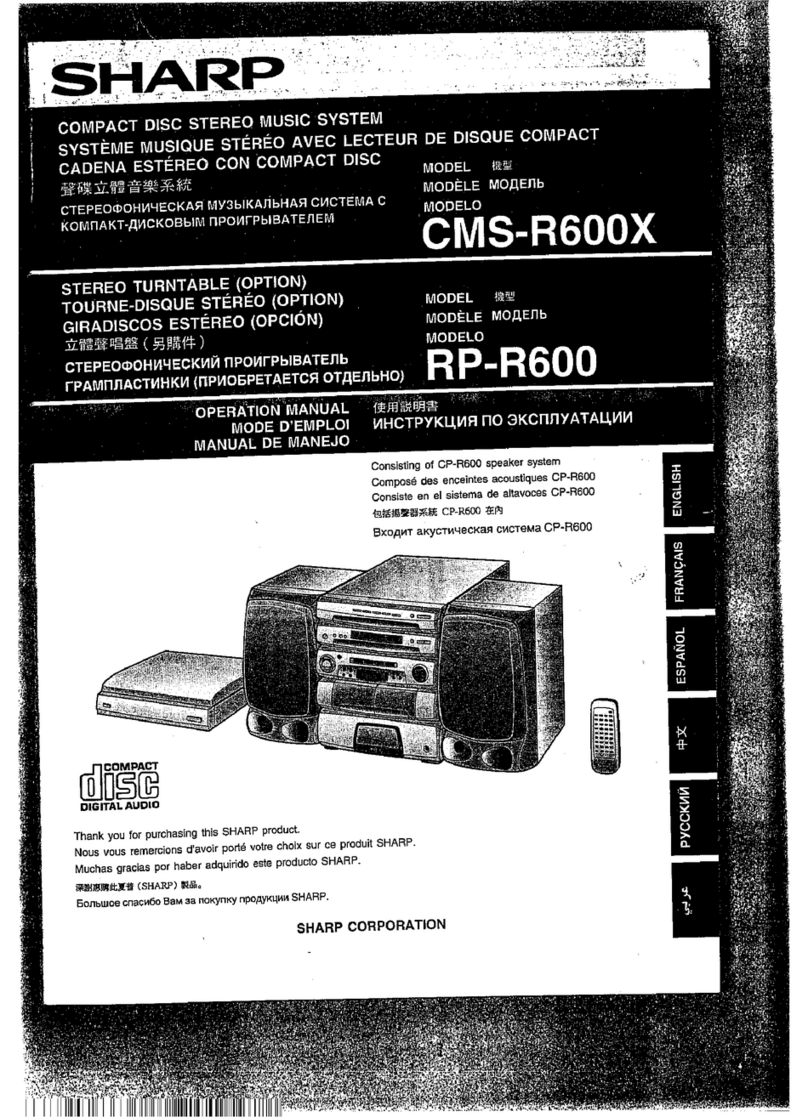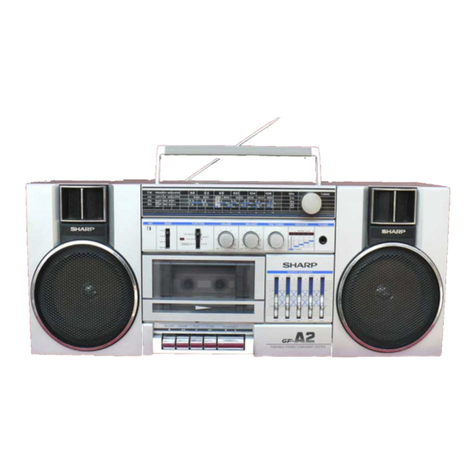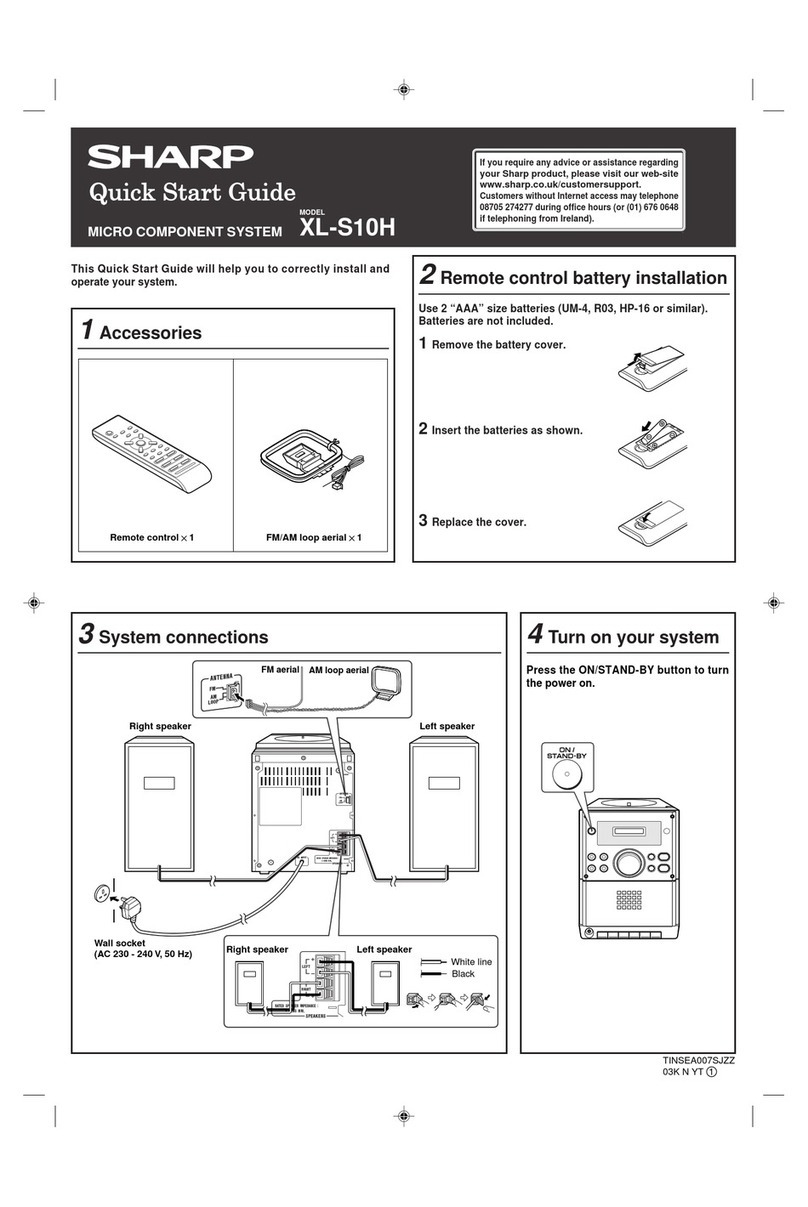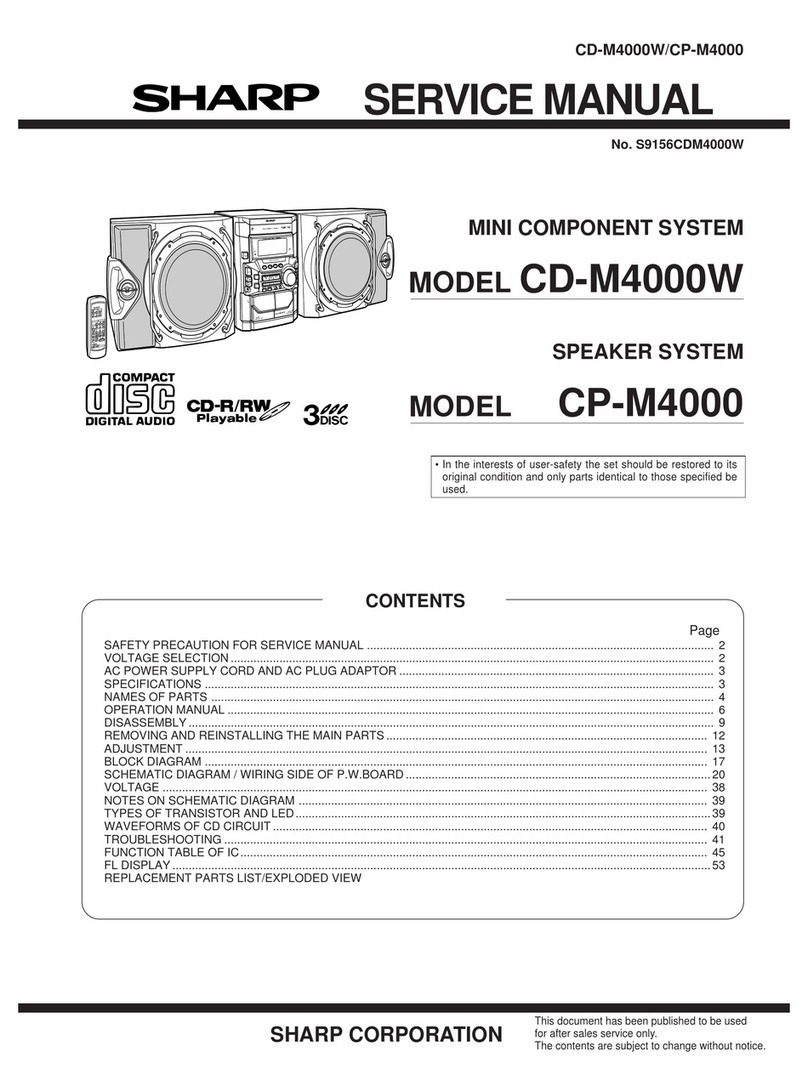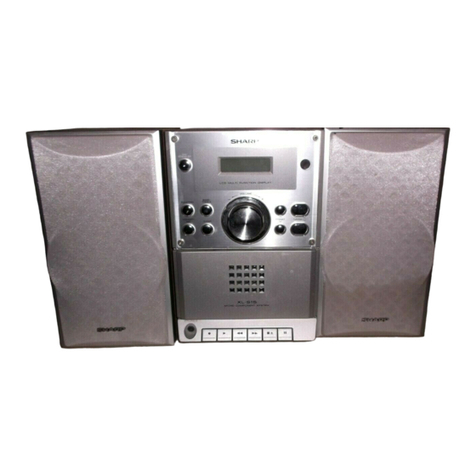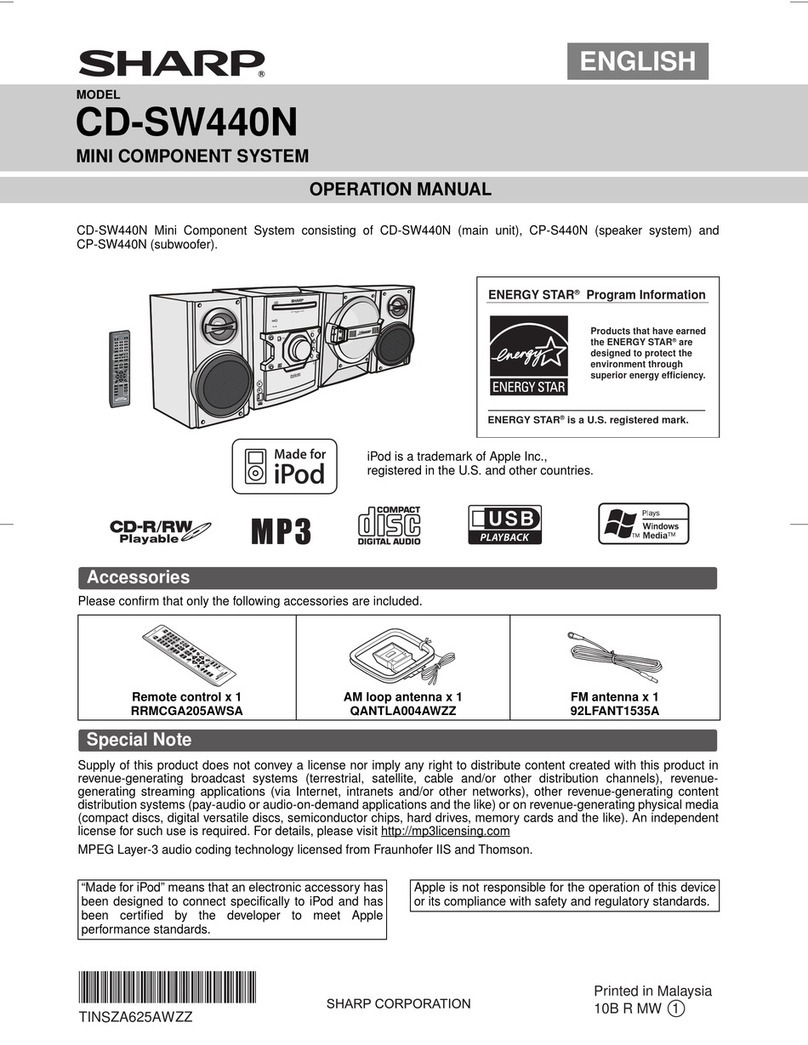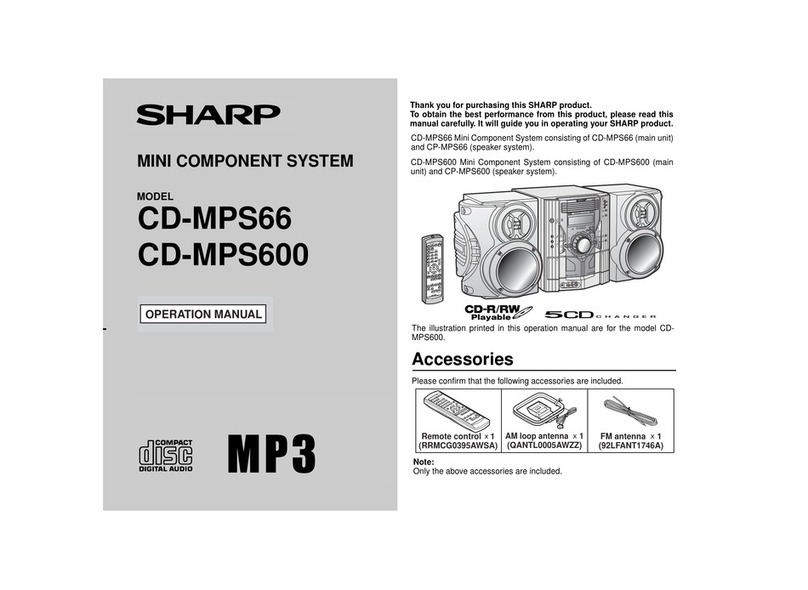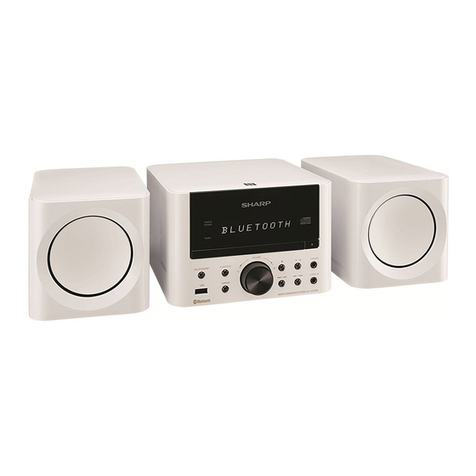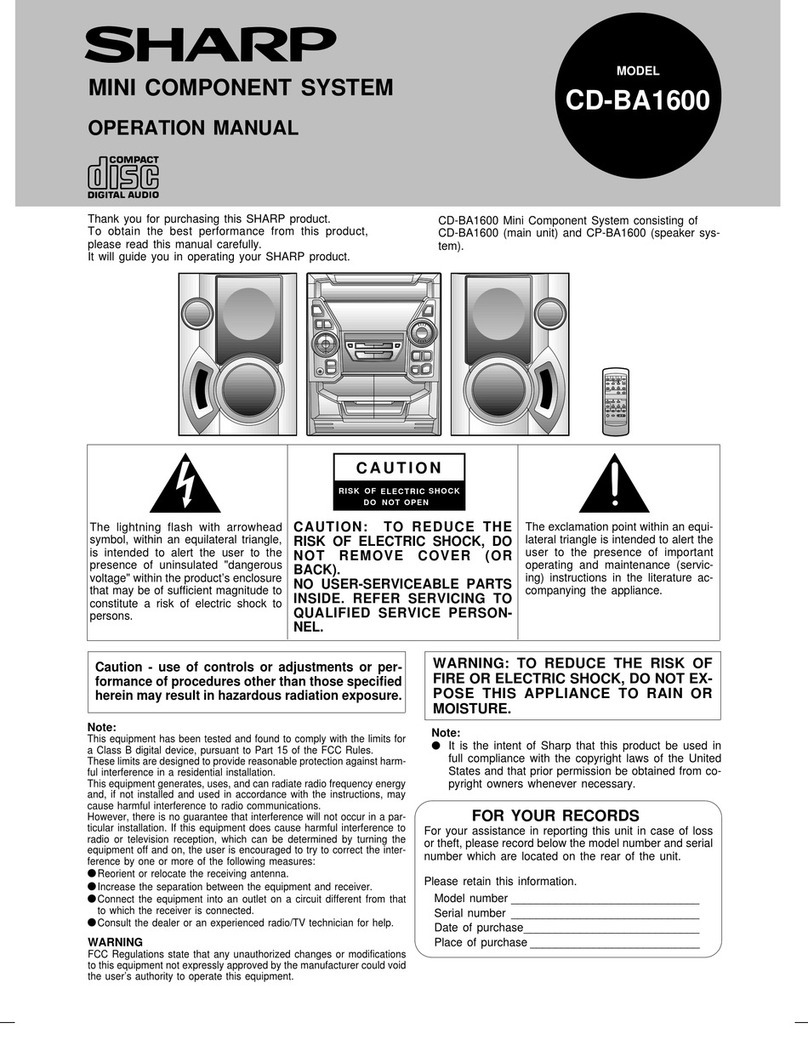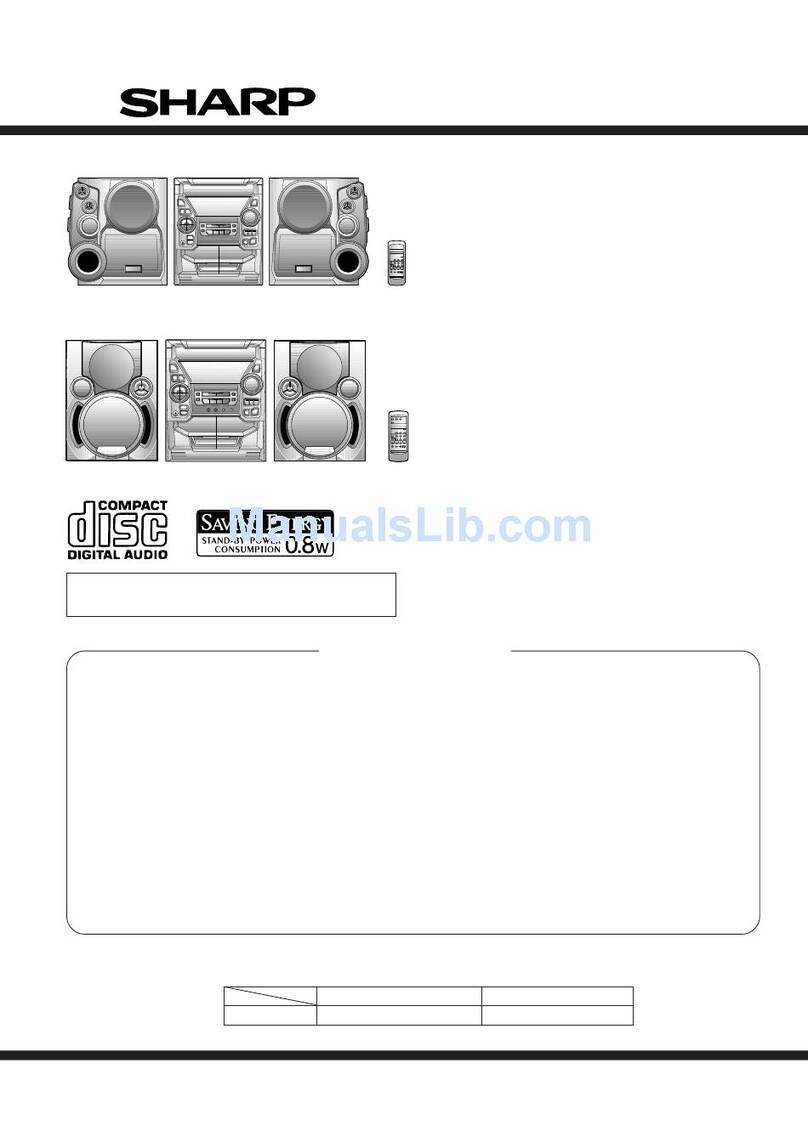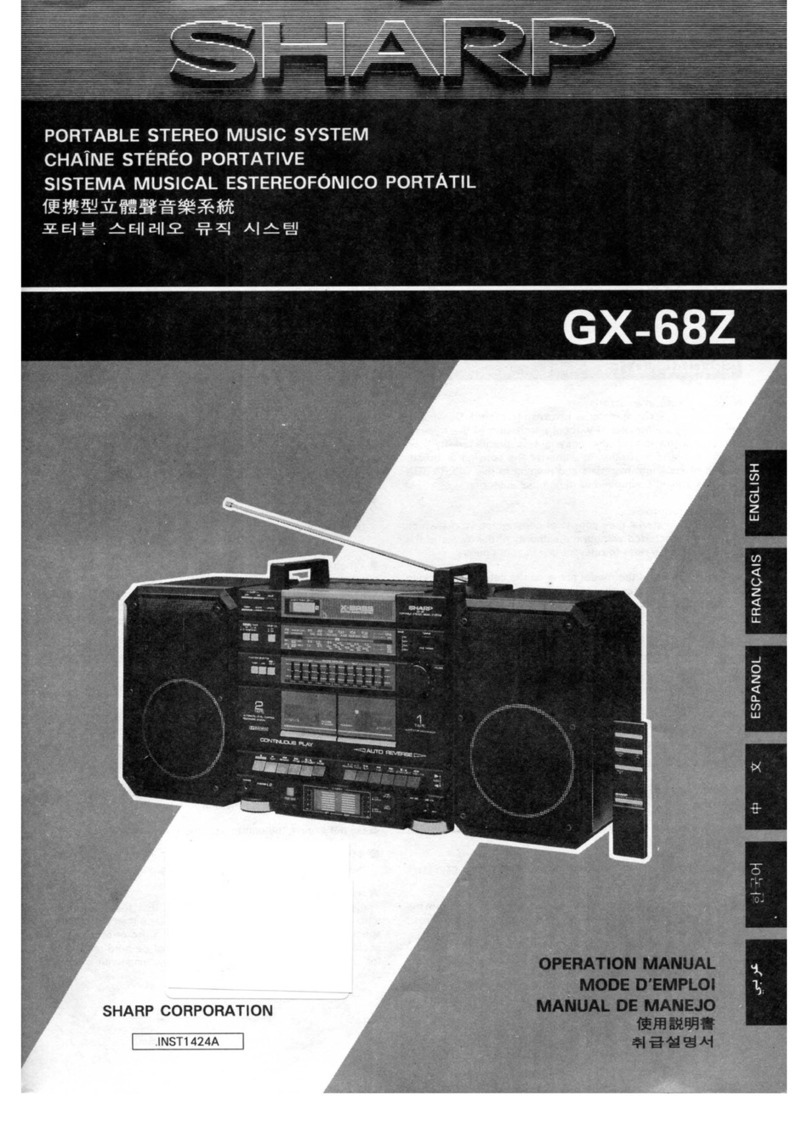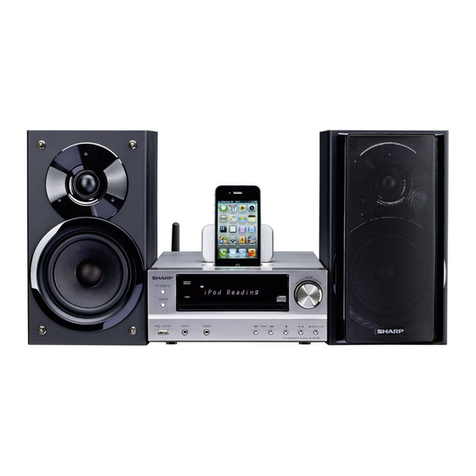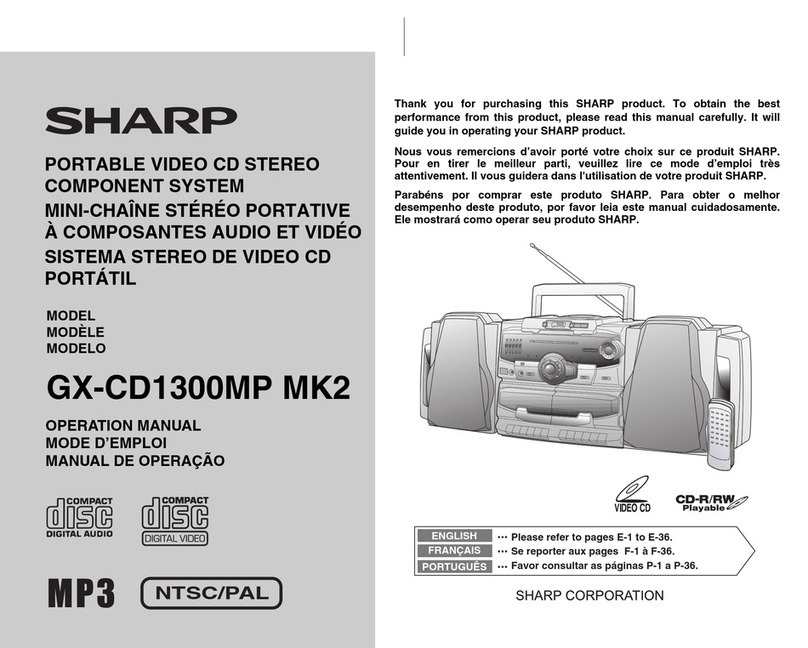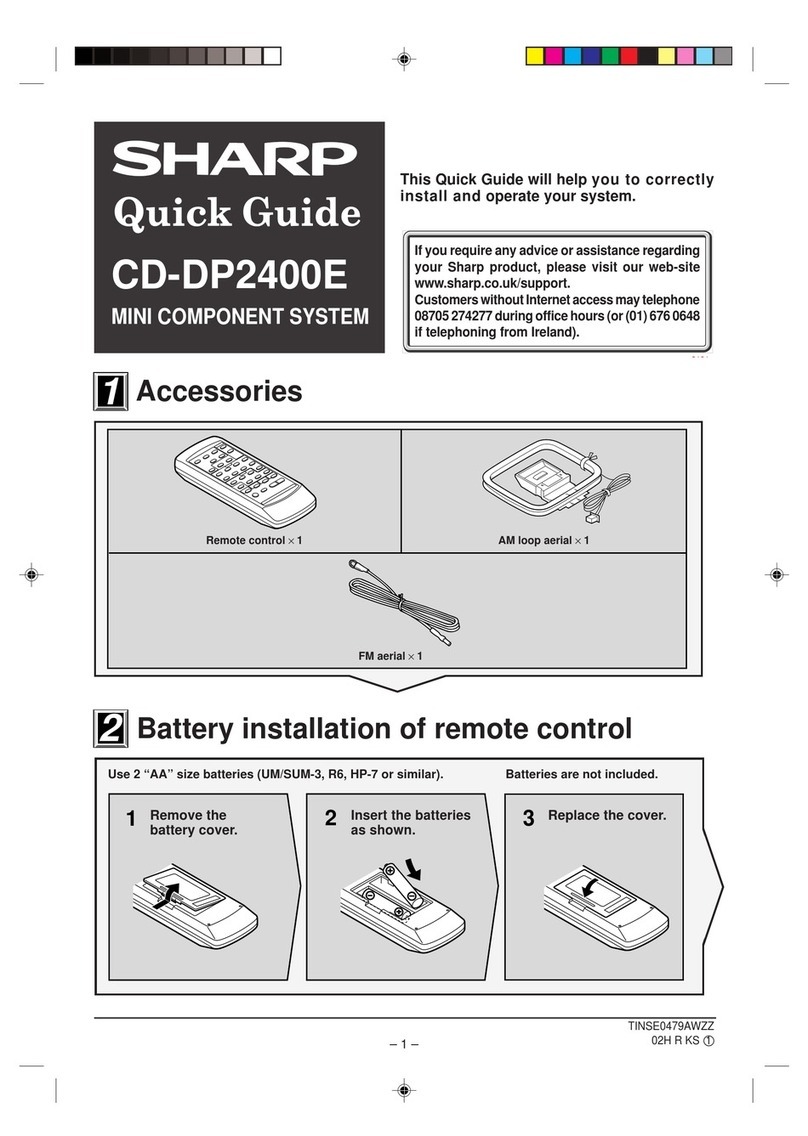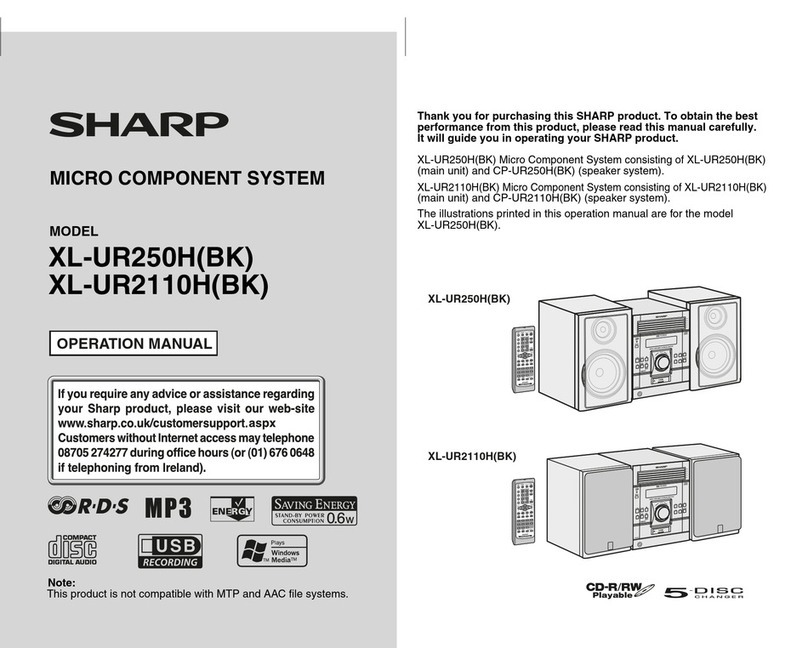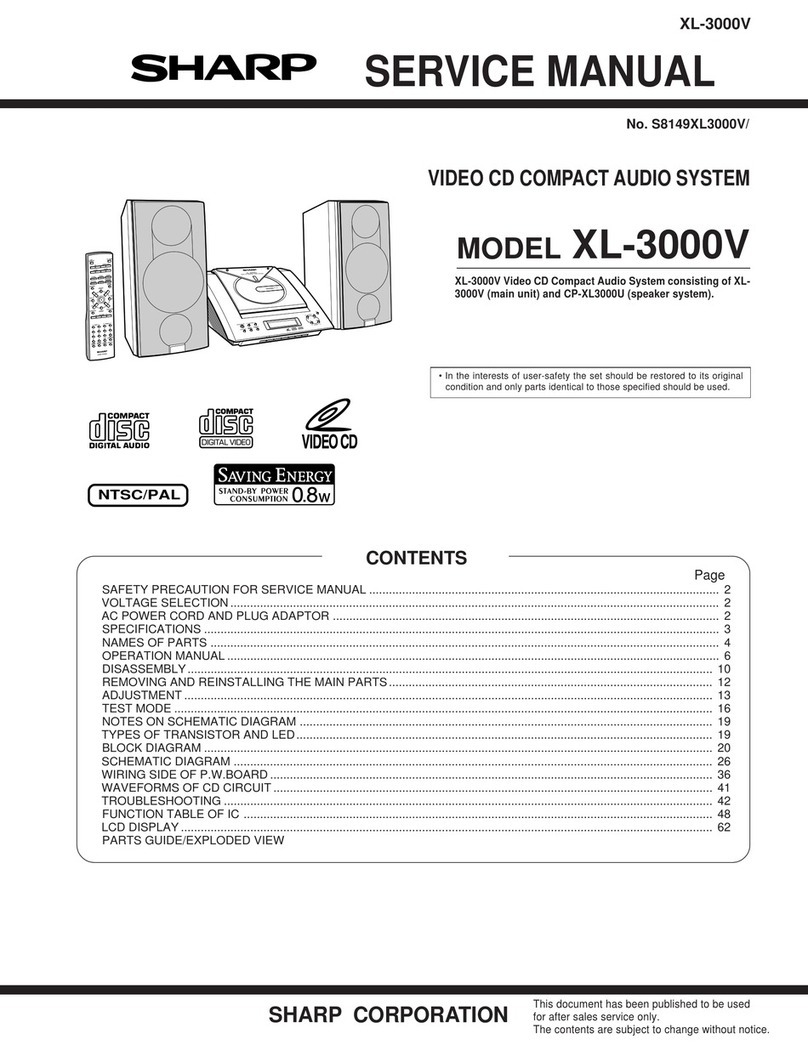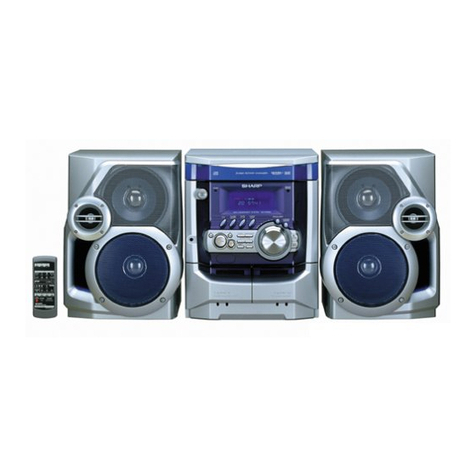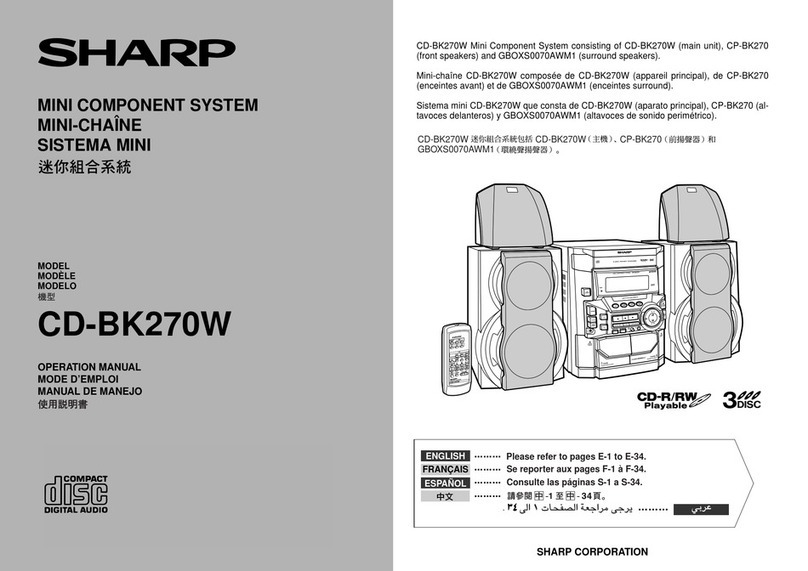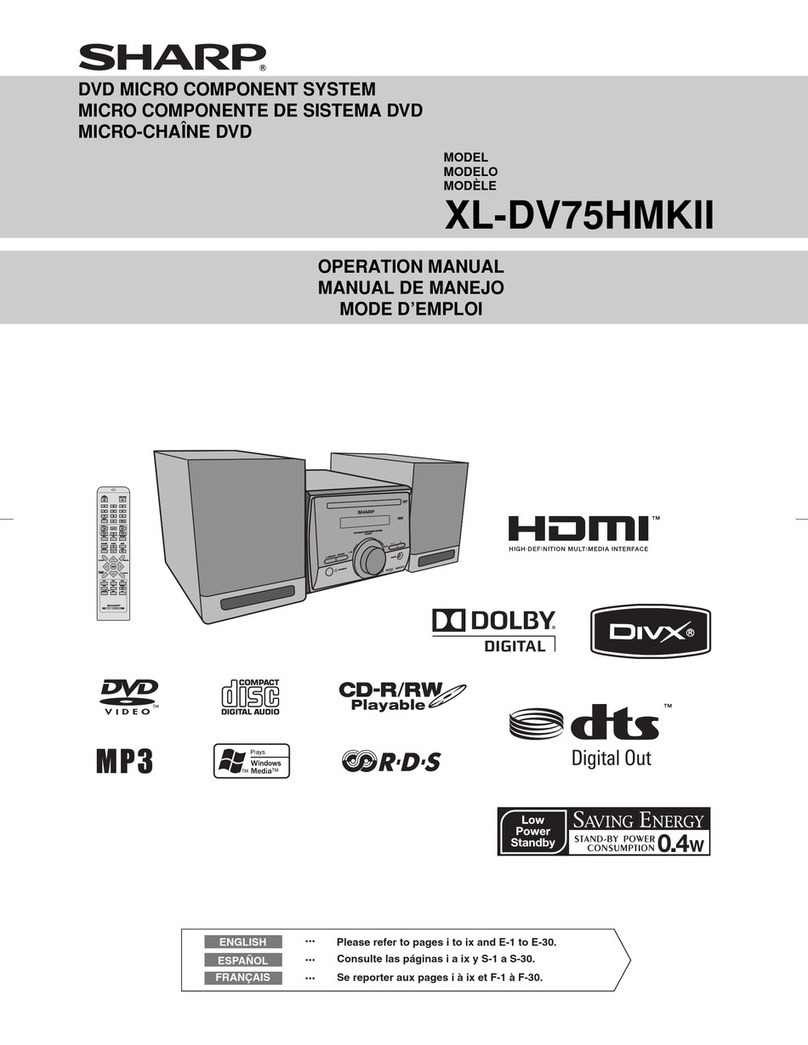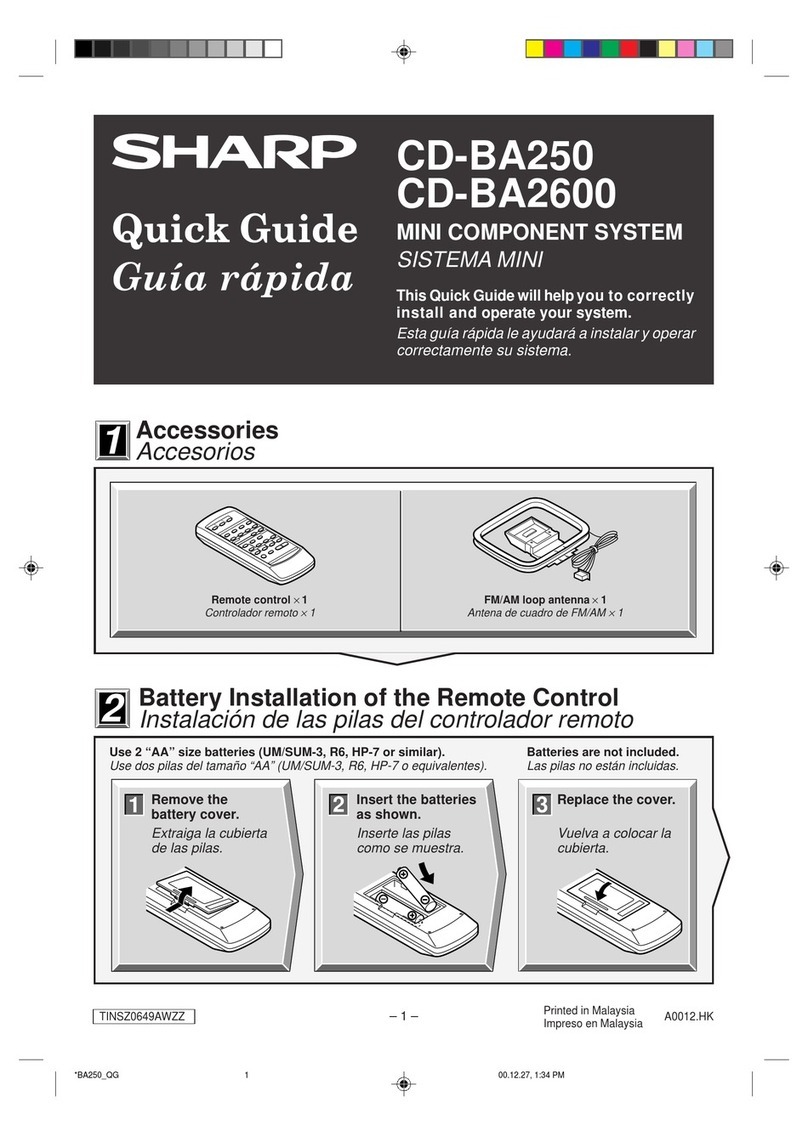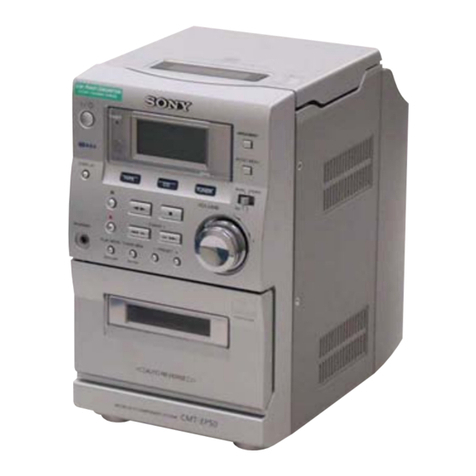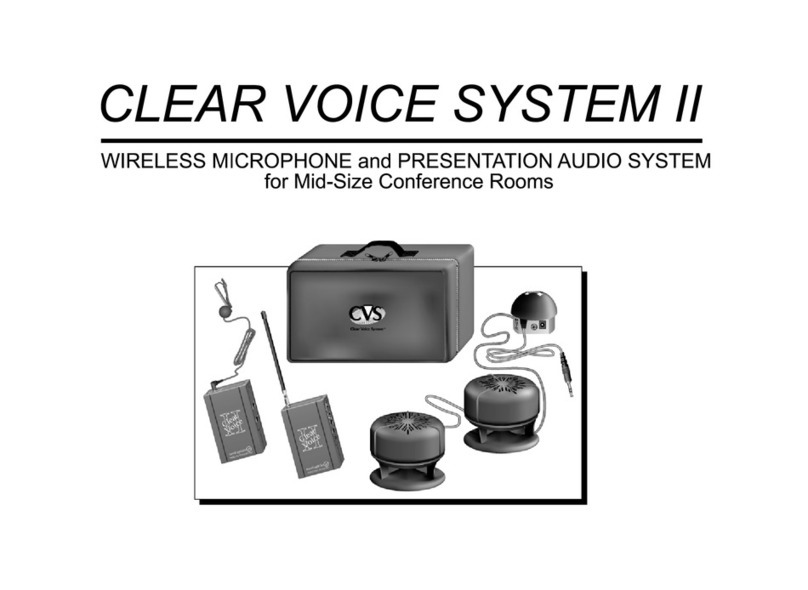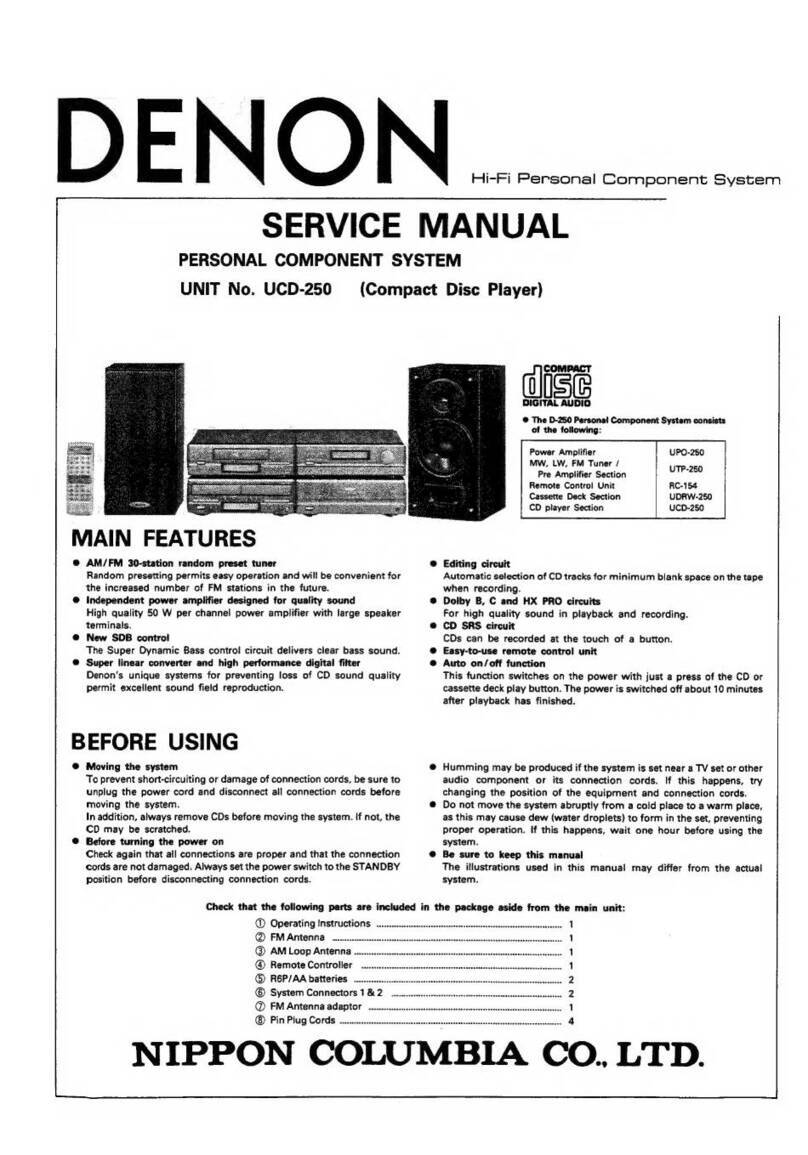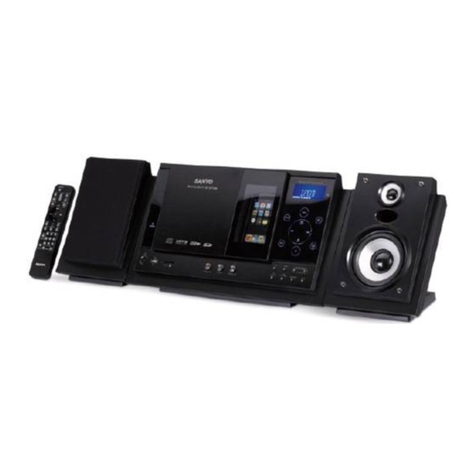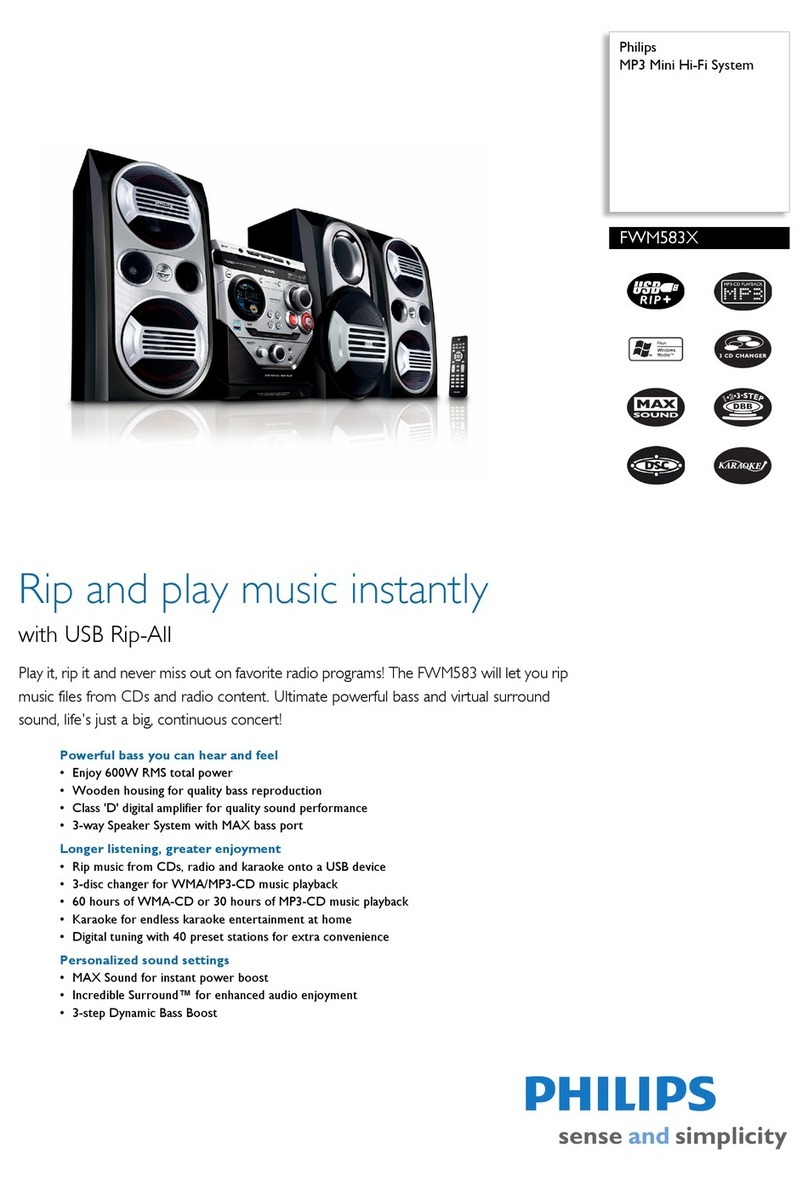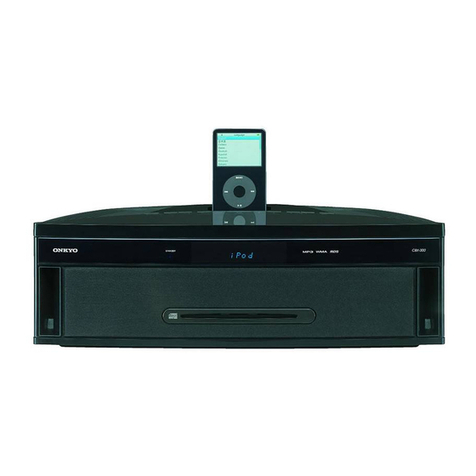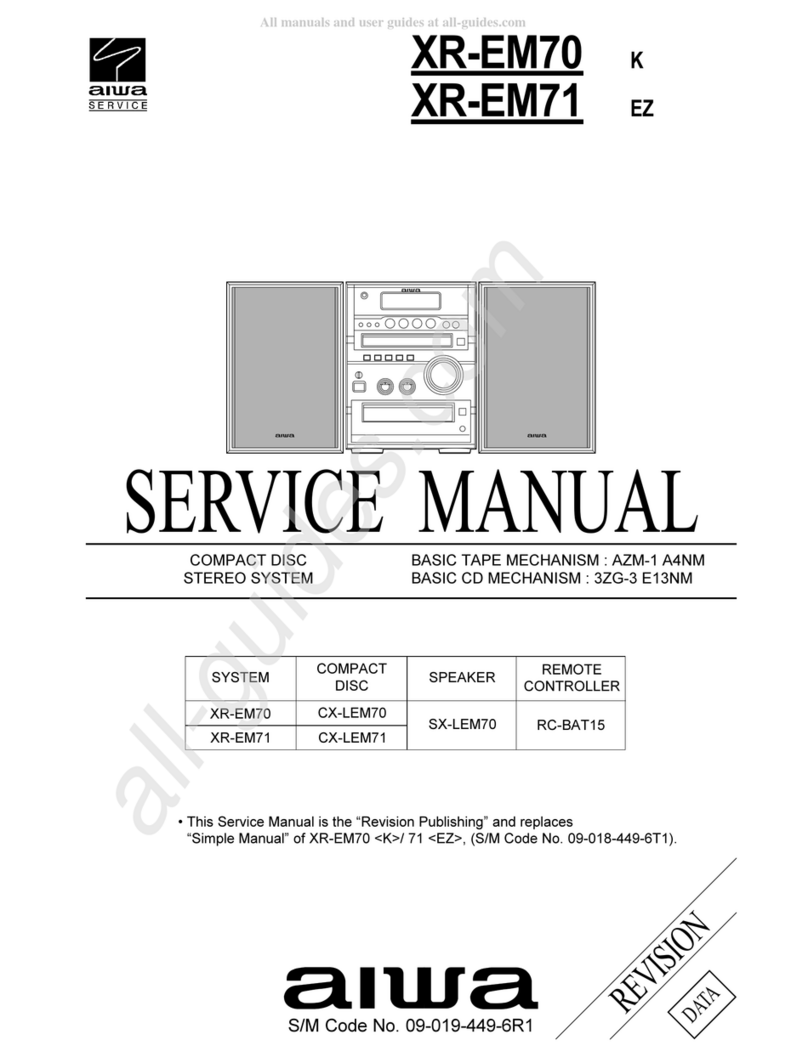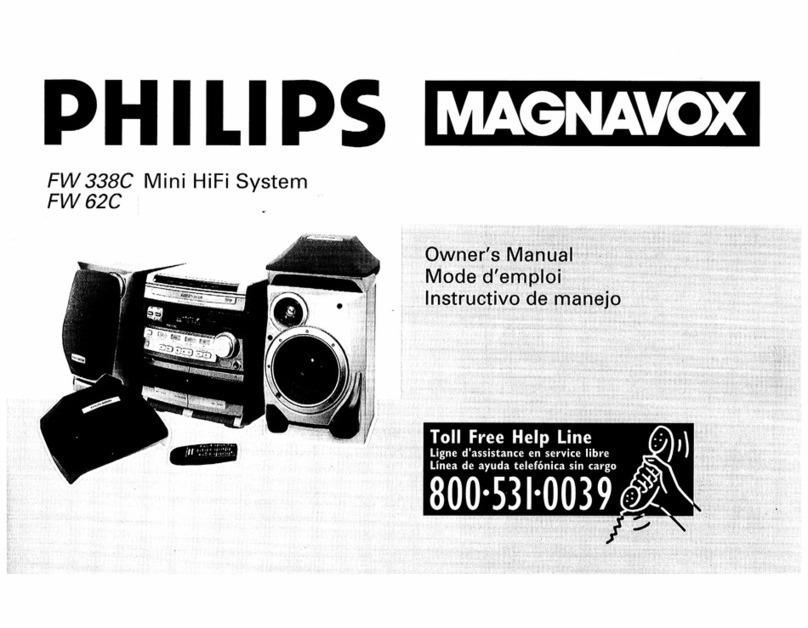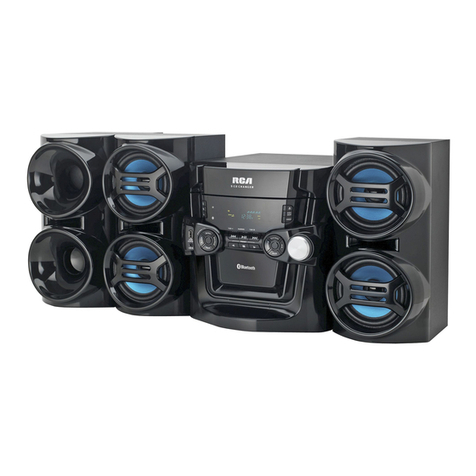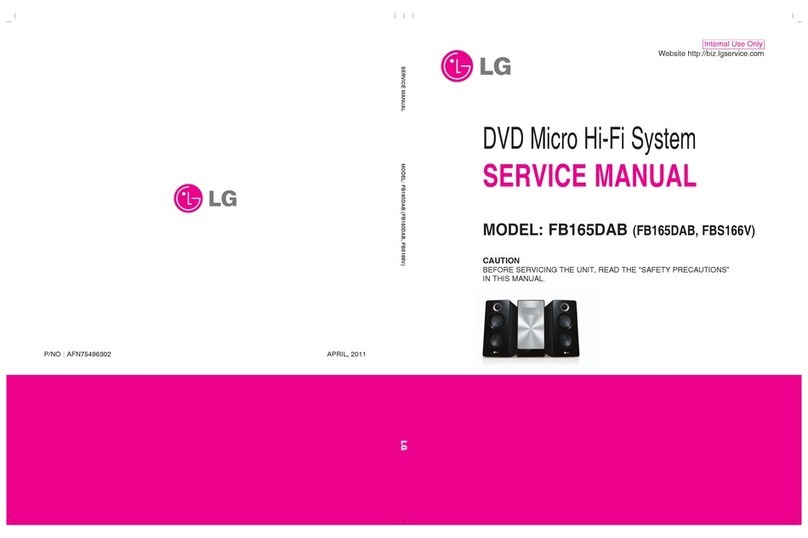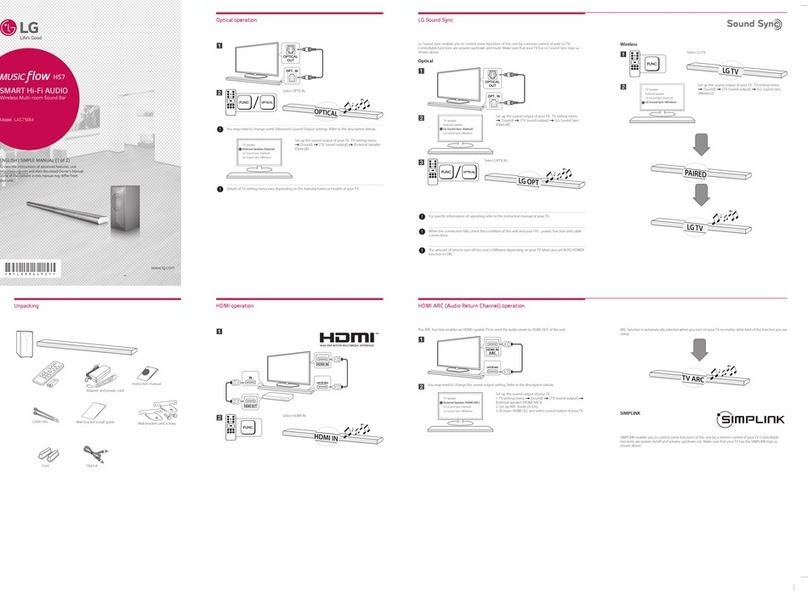– 7 –
CD-DD4500
Troubleshooting Chart
Many potential “problems” can be resolved by the owner without calling a service tech-
nician. If something is wrong with this product, check the following before calling your
authorized SHARP dealer or service center.
Tuner
Symptom
Radio makes unusual noise con-
secutively.
Possible cause
Is the unit placed near the TV or com-
puter?
Isthe FM/AMloop antennaplacedprop-
erly?
Move theAC power cord away from the
antenna if located near.
General
Symptom
The clock is not on time.
Whena buttonis pressed,the unit
does not respond.
No sound is heard.
The balance between the left and
right channels is bad.
Hum or excessive noise.
No sound is heard, or the sound
is too low, from the center or sur-
round speakers.
The TIMER indicator is flashing.
CD player
Symptom
Playback does not start.
Playback stops in the middle or is
not performed properly.
Playback sounds are skipped, or
stopped in the middle of a track.
Possible cause
Is the disc loaded upside down?
Does the disc satisfy the standards?
Is the disc distorted or scratched?
Is the unit located near excessive vibra-
tions?
Is the disc very dirty?
Has condensation formed inside the
unit?
Possible cause
Did a power failure occur?
Reset the clock.
Setthis unitto thepowerstand-by mode
and then turn it back on.
If the unit still malfunctions, reset it.
Is the volume level set to “0”?
Are the headphones connected?
Are the speaker wires disconnected?
Are the front and surround speakers
connected to the correct left and right
channels?
If an external unit is connected, are the
left and right channels connected prop-
erly?
Isthe speakercordplugged incorrectly?
Does the speaker cord run past other
electronic equipment?
Are the plugs or terminals dirty?
Is the “SP SIZE” item set to “NO” in the
“SET UP” operation?
Is the volume too low?
Is the speaker wire shorted?
Was the unit used at high volume for
many hours?
Cassette deck
Symptom
Cannot record.
Cannot record tracks with proper
sound quality.
Cannot erase completely.
Sound skipping.
Cannot hear treble.
Sound fluctuation.
Cannot remove the tape.
Possible cause
Is the erase-protection tab removed?
Is it a normal tape?
(You cannot record on a metal or CrO
2
tape.)
Is there any slack?
Is the tape stretched?
Arethe capstans,pinch rollers,orheads
dirty?
Ifa powerfailureoccurs duringplayback,
theheads remainengagedwith thetape.
Do not open the compartment forcibly.
Wait until electricity resumes.
Remote control
Symptom
The remote control does not op-
erate.
Possible cause
Is theAC power cord of the unit plugged
in?
Is the battery polarity respected?
Are the batteries dead?
Is the distance or angle incorrect?
Does the remote control sensor receive
strong light?
Condensation
Sudden temperature changes, storage or operation in an extremely humid envi-
ronment may cause condensation inside the cabinet (CD pickup, tape heads,
etc.) or on the transmitter on the remote control.
Condensation can cause the unit to malfunction.
If this happens, leave the power on with no disc (or cassette) in the unit until
normal playback is possible (about 1 hour). Wipe off any condensation on the
transmitter with a soft cloth before operating the unit.
Connecting DVD player
Symptom
Although a DVD player is con-
nected, no sound is heard.
Possible cause
Is the power to the DVD player con-
nected properly?
Is a digital signal being output from the
DVD player?
Is “DVD NO” being displayed?
Does the type of DVD digital signal ap-
pear in the display?
Since “DVD---” is not output from the
Dolby digital source, it cannot be
decorded.
Is a Dolby digital 2/0 (monaural) signal
beingplayed withthe surroundmodeset
to NORMAL and without a center
speaker connected?
If trouble occurs
When this product is subjected to strong external interference (mechanical shock, ex-
cessive static electricity, abnormal supply voltage due to lightning, etc.) or if it is oper-
ated incorrectly, it may malfunction.
If such a problem occurs, do the following:
1
. Set the unit to the stand-by mode and turn the power on again.
2
. If the unit is not restored in the previous operation, unplug and plug in the
unit, and then turn the power on.
Note:
If neither operation above restores the unit, clear all the memory by resetting it.
